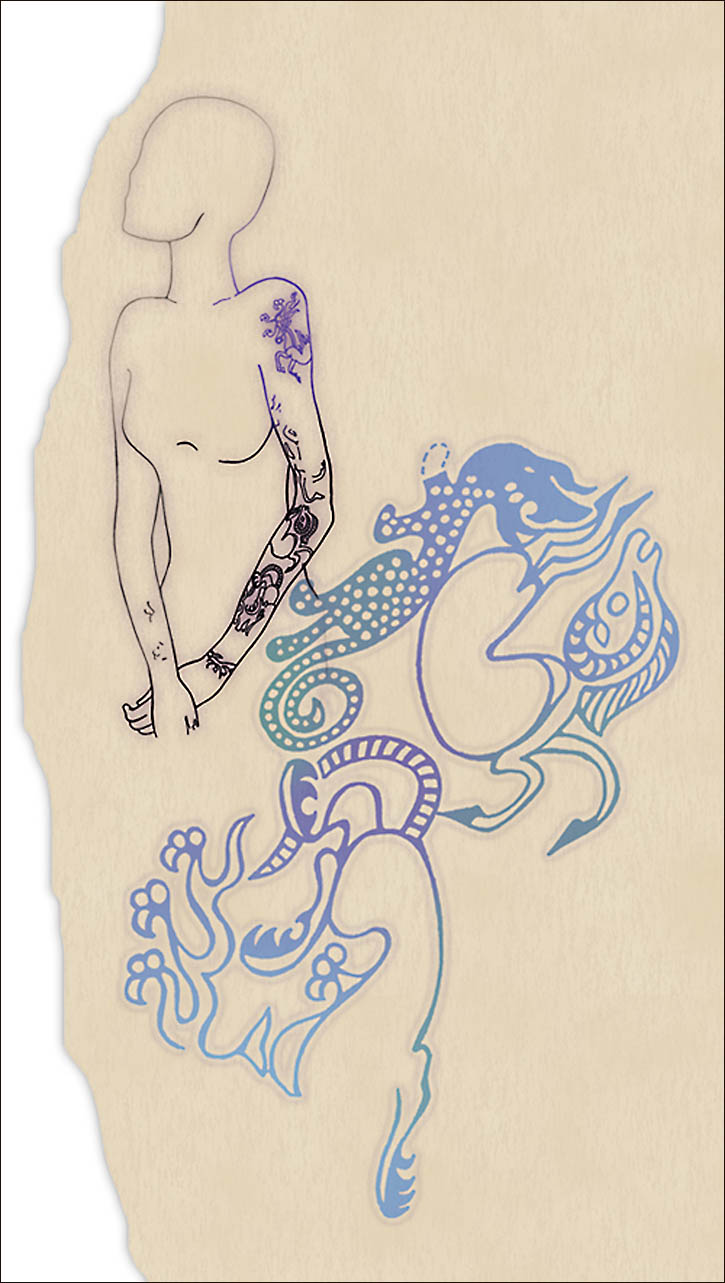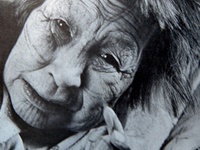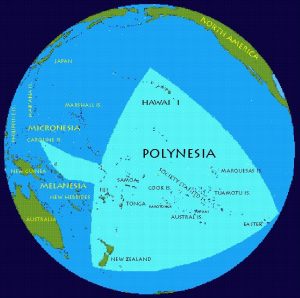I don't agree that tattooing and branding are traditionally connected
I don't have any myself , yet , but did once ask at a tattoo shop how much the FOTCM logo would cost me

I started thinking about all the indigenous skin marking customs
I can think of and did a quick search
1. arctic people
Siberian princess reveals her 2,500 year old tattoos
Siberian Princess reveals her 2,500 year old tattoos
By The Siberian Times reporter
14 August 2012
The ancient mummy of a mysterious young woman, known as the Ukok Princess, is finally returning home to the Altai Republic this month.

Reconstruction of a warrior's tattoos, who was discovered on the same plateau as the 'Princess'. All drawings of tattoos, here and below, were made by Elena Shumakova, Institute of Archeology and Ethnography, Siberian Branch of Russian Academy of Science
She is to be kept in a special mausoleum at the Republican National Museum in capital Gorno-Altaisk, where eventually she will be displayed in a glass sarcophagus to tourists.
For the past 19 years, since her discovery, she was kept mainly at a scientific institute in Novosibirsk, apart from a period in Moscow when her remains were treated by the same scientists who preserve the body of Soviet founder Vladimir Lenin.
To mark the move 'home', The Siberian Times has obtained intricate drawings of her remarkable tattoos, and those of two men, possibly warriors, buried near her on the remote Ukok Plateau, now a UNESCO world cultural and natural heritage site, some 2,500 metres up in the Altai Mountains in a border region close to frontiers of Russia with Mongolia, China and Kazakhstan.
They are all believed to be Pazyryk people - a nomadic people described in the 5th century BC by the Greek historian Herodotus - and the colourful body artwork is seen as the best preserved and most elaborate ancient tattoos anywhere in the world.
To many observers, it is startling how similar they are to modern-day tattoos.
Reconstruction of Princess Ukok's tattoos, made by Siberian scientists
The remains of the immaculately dressed 'princess', aged around 25 and preserved for several millennia in the Siberian permafrost, a natural freezer, were discovered in 1993 by Novosibirsk scientist Natalia Polosmak during an archeological expedition.
Buried around her were six horses, saddled and bridled, her spiritual escorts to the next world, and a symbol of her evident status, perhaps more likely a revered folk tale narrator, a healer or a holy woman than an ice princess.
There, too, was a meal of sheep and horse meat and ornaments made from felt, wood, bronze and gold. And a small container of cannabis, say some accounts, along with a stone plate on which were the burned seeds of coriander.
'Compared to all tattoos found by archeologists around the world, those on the mummies of the Pazyryk people are the most complicated, and the most beautiful,' said Dr Polosmak. More ancient tattoos have been found, like the Ice Man found in the Alps - but he only had lines, not the perfect and highly artistic images one can see on the bodies of the Pazyryks.

www.larskrutak.com
so much here , too much to quote all
From the preceding remarks, it seems that the issue of death, whether human or animal, cast into symbolic tattooed relief important cultural values by which circumpolar peoples lived their lives and evaluated their experiences. As noted, physical contact with the dead, human or animal, was met with apprehension. This was because the spirits of great animals (e.g.,polar bears, whales) or humans were believed to be imbued with a personhood that was considered to be equivalent or superior to that of the living (Mousalimas 1997: 8; Oosten 1997: 98). As an individual matured, his or her education revolved around the increasing awareness of the natural and supernatural worlds, and the prescriptions and proscriptions for proper behavior within them (Fienup-Riordan 1986: 263). The supernatural was met everywhere in the landscape and places along hunting or travel routes became sacred because they embodied local spirits or manifested the presence of higher divinities including animals and deceased ancestors (Hultkrantz 1965: 308). Therefore, it was here, within the landscape of sea, ice, and frozen tundra, that the everyday, elusive and unobservable experiences, rituals and rites of passage took place circumscribing the identity of the people by linking them to a collectively shared and experienced sense of place (Nuttall 2000: 42). Indeed, humans, animals and everything in the natural world shared the same fundamental spiritual essence (Nuttall 2000: 37), and in this sense “persons” were constituted of multiple personal attributes extending beyond the human domain.
Dec 22, 2021 - Explore Jamie Smith's board "Inuit Tattoo" on Pinterest. See more ideas about inuit, inuit art, inuit people.

www.pinterest.com.au
2 African people
For Africa’s indigenous Amazighs, body art was more than mere images. They were a decisive social, almost poetic, marker for centuries.

www.trtworld.com
“Women considered the tattoos their defining factor in that it made them stand out. Their permanence symbolized a sort of immortality that cannot be attained with removable make-up. It gave women a type of glitz and glamour that nevertheless did not obscure their real beauty and facial features like the cosmetic products of the modern era. It made them pretty without reducing them to consumeristic subjects vying for attention or validation.”
In Algeria, tattoos were a vital form of self-expression or social status. For example, widowed women would get a tattoo between the ear and the chin.
Facial tattoos, meanwhile, were seen as a protective omen against evil or illness. The latter was characterized by the “ahjam,” or “healing,” tattoo, which was inscribed with a knife.
Tattoos were by no means limited to women. In fact, men got tattoos too, though the shapes were smaller and more discreet.
3 Pacific island people
Maori Tattoo (Ta Moko) - the definite guide to Maori tattoo designs and symbols, including fish hook tattoos, patterns, styles and the meanings behind different tribal tattoos.

www.zealandtattoo.co.nz
There is still debate over the definitive origins of Polynesian culture and that transfers also, to the notion of tattooing.
One thing that is certain is that the term Polynesian or Polynesia incorporates many tribes including Marquesans, Samoans, Niueans, Tongans, Cook Islanders, Hawaiians, Tahitians and Maori. All of these tribes are genetically linked to the indigenous peoples from parts of Southeast Asia.
Southeast Asia and in turn, Polynesia are sub-regions of Oceania, comprising of a large grouping of over 1000 islands scattered over the central and southern Pacific Ocean, within a triangle that encompasses New Zealand, Hawaii and Easter Island as it’s corners.
The people who inhabit the islands of Polynesia are termed Polynesians and they share many similar traits including language, culture and beliefs.
The Polynesian Triangle
However, Polynesian languages may actually vary slightly from each other, and in some cases they actually differ quite significantly. There are some words, which are basically the same throughout all Polynesian languages, reflecting the deepest core of all Polynesian cultures. Moana (ocean) and mana (spiritual force and energy) are two terms that transcend all Polynesian cultures.
These words are rather similar and this reflects how closely related Polynesian cultures are with the ocean, as they believe that the ocean guarantees life.
The Origins of Tattoo Art in Polynesia
Historically there was no writing in Polynesian culture so the Polynesian’s used tattoo art that was full of distinctive signs to express their identity and personality. Tattoos would indicate status in a hierarchical society as well as sexual maturity, genealogy and ones rank within the society. Nearly everyone in ancient Polynesian society was tattooed.
The Polynesian islands that were first first visited were the Marquesas Islands, which were found by European explorers and the Spanish navigator, Alvaro de Mendana de Neira, in 1595. However, the European navigators showed little interest due to the lack of valuable resources.
Captain James Cook (as mentioned in our comprehensive guide to Maori tattooing) was the first navigator trying to explore the aforementioned Polynesian triangle.
In 1771, when James Cook first returned to Tahiti and New Zealand from his first voyage, the word “tattoo” appeared in Europe. He narrated the behaviours of the Polynesian people in his voyage, which he called tattaw. He also brought a Tahitian named Ma’i to Europe and since then tattoo started to become rapidly famous, predominantly because of the tattoos of Ma’i.
Another legend is that European sailors liked the Polynesian tattoos so much that they spread extremely fast in Europe because the sailors emblazoned the tattoos on their own bodies.
The actual tradition of Polynesian tattooing existed more than 2000 years ago, however in the 18th century the Old Testament strictly banned the operation.
and Japan
Tattooing for spiritual and decorative purposes in Japan is thought to extend back to at least the Jomon or Paleothic periods, (approximately 10 000 BC).
During the Yayoi period (300 BC to 300 AD), tattoo designs were observed and remarked upon by Chinese visitors. Such tattoo designs were thought to have spiritual significance as well as functioning as a status symbol.
Latterly, in the Kofun period (300 – 600 AD), tattoos began to assume negative connotations. Instead of being used for ritual or status purposes, tattooed marks began to be placed on criminals as a punishment (this was mirrored in Ancient Rome, where slaves were known to have been tattooed with mottos such as “I am a slave who has run away from his master”).
Until the Edo period (1600 – 1868 AD) the role of tattoos fluctuated. Tattooed marks were still used as punishment, but minor fads for decorative tattoos – some featuring tattoo designs that would be completed only when lover’s hands were joined – also came and went. It was in the Edo period, however, that Japanese decorative tattooing began to develop into the advanced art form that it is today (i.e. throughout the last 400 years).
4. Europe
We’ve all heard that tattoos have been around since the dawn of time and that they represented the wearer's achievements

culturacolectiva.com
After different studies on Ötzi, including genetic tests and CAT scans, it was determined that he died at the age of 45 from a wound. At first, it was believed that the geometrical tattoos found on his body, which included assembled lines and one cross, had a spiritual meaning or cultural value important to his community. It was also determined that these tattoos were made by rubbing soot or ashes into a fresh incision, so that the pigment would stay trapped inside once the wound healed. This technique is the same one identified on many other mummies found to use the art of tattooing for decorative and differentiation purposes. However, when they got Ötzi's genome results, they discovered that his many tattoos were more related to a medicinal technique.
Among the many ailments Ötzi suffered from, the ones that seemed the most problematic for his everyday life were gallbladder stones, osteochondrosis, and a debilitating joint disorder. 60 of his tattoos were placed right on the parts where he had the most physical deterioration, mostly his joints. This is crucial to understanding why people in the Copper Age adopted tattooing, but it has also led scientists to believe that other civilizations understood and practiced acupuncture way before the ancient Chinese. The fact that Ötzi’s tattoos are located in places that hurt him could be very strong evidence that the geometric designs were actually indicators of where to poke him to relieve his pain.
back to the arctic... . In circumpolar cultures, and especially on St. Lawrence Island, the primary factor determining sickness was the intrusion of an evil spirit from outside the body into one of the souls of the afflicted individual. These types of malevolent actions of the spirit upon the body were traced to disordered behavior, possession, illness (rheumatism), and sometimes death (Krutak 1998: 58; 1999: 231). Consequently, and as a form of spiritual/medicinal practice, St. Lawrence Islanders tattooed specific joints. As mentioned earlier, joints served as the vehicular “highways” which evil entities traveled to enter the human body and injure it. Thus, joint-tattoos protected individuals by closing down these pathways, since the substances utilized to produce tattoo pigment – urine, soot, and sometimes graphite – were the nexus of dynamic and apotropaic power, preventing an evil spirit from penetrating the human body.














